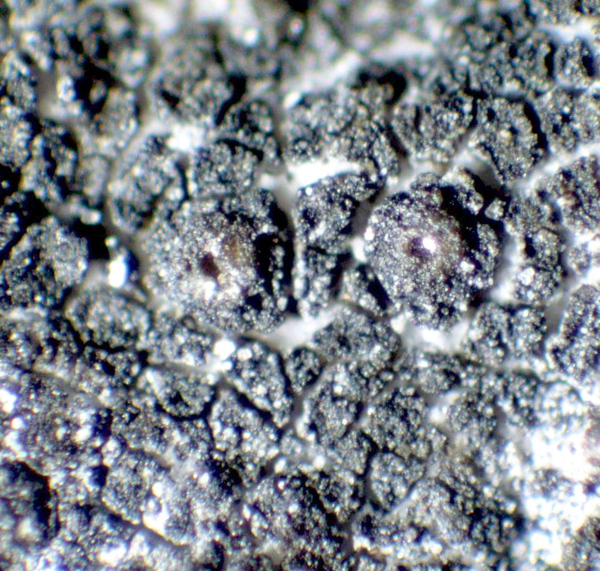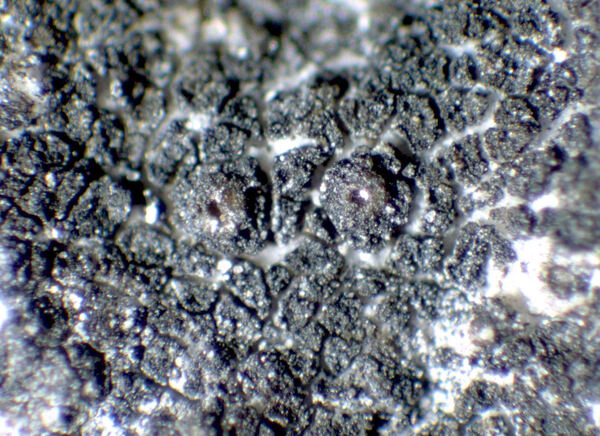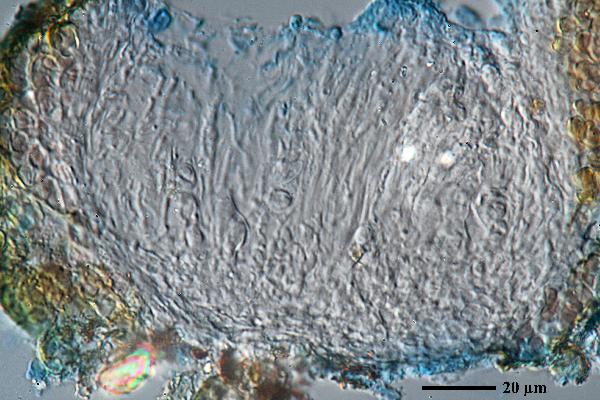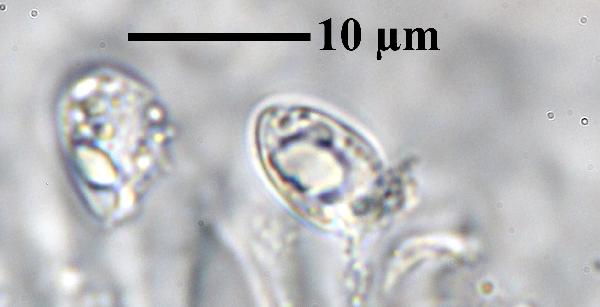Thelochroa montinii A. Massal.
Symmicta Lich.: 86, 1855.
Synonyms: Porocyphus montinii (A. Massal.) Arnold; Psorotichia montinii (A. Massal.) Forssell; Psorotichia recondita Arnold; Pyrenocarpon montinii (A. Massal.) Trevis.
Distribution: N - VG, Frl (TSB 16802), Ven (Lazzarin 2000b), TAA (Schultz 2014), Lig (Watson 2014). C - Laz (Bartoli & al. 1998), Abr. S - Pugl (Nimis & Tretiach 1999), Si (Nimis & al. 1994).
Description: Thallus crustose, homoiomerous, 50-65 µm thick, minutely granulose to almost powdery, usually forming 1-2(-3) mm wide, orbicular patches, rarely somewhat spreading. Granules 0.1-0.3(-0.4) mm wide, diffuse or densely aggregated, blackish when dry, dark olive-brown and weakly subgelatinous when wet. Thallus anatomy paraplectenchymatous, with a loose network of more or less isodiametric, 2-3 µm wide cells enclosing the photobiont cells. Apothecia very small, 0.1-0.2(-0.3) mm across, with an initially punctiform but soon expanded, dark orange-brown, concave disc and a shallow to prominent, persisting, sometimes granulose thalline margin. Proper exciple cupuliform, prosoplectenchymatous, very thin (to 10 µm wide); epithecium orange-brown, up to 15 µm high, K-; hymenium colourless, 70-90 µm high, I+ blue; paraphyses branched and anastomosing, slightly constricted at septa, 2-3 µm thick. Asci 8-spored, narrowly clavate, rather thick-walled, without internal amyloid structures, 50-60 x 11-20 µm. Ascospores 1-celled, hyaline, thin-walled, subglobose to broadly ellipsoid, 8-15 x 5-9 µm. Photobiont cyanobacterial, chroococcoid, of a few cells penetrated by haustoria, measuring 6-13 x 4-7 µm, surrounded by a gelatinous sheath which is yellowish brown near the thallus surface. Spot tests: all negative. Chemistry: without lichen substances. Note: a mainly southern species found on steeply inclined, south-exposed seepage tracks of calcareous rocks, sometimes invading the thalli of endolithic lichens, especially Bagliettoa-species; certainly more widespread. According to Prieto & al. (2024) the generic affiliation of this enigmatic species is still uncertain, but it is very unlikely that it belongs to Pyrenocarpon, where it was frequently placed; pending further research, I use the original generic affiliation by Massalongo.
Growth form: Crustose
Substrata: rocks
Photobiont: cyanobacteria, coccaceous (e.g. Gloeocapsa)
Reproductive strategy: mainly sexual
On otherwise dry surfaces with short periods of water seepage after rain
Commonnes-rarity: (info)
Alpine belt: absent
Subalpine belt: absent
Oromediterranean belt: absent
Montane belt: very rare
Submediterranean belt: rare
Padanian area: absent
Humid submediterranean belt: rare
Humid mediterranean belt: rather rare
Dry mediterranean belt: extremely rare

Predictive model
Herbarium samples
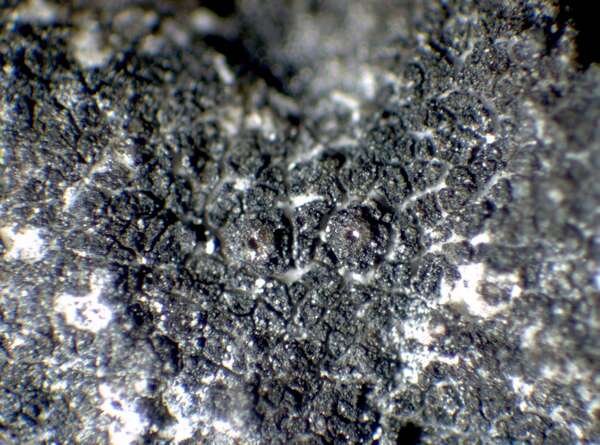

P.L. Nimis; Owner: Department of Life Sciences, University of Trieste
Herbarium: TSB (16802)
2001/12/11
thallus with apothecia
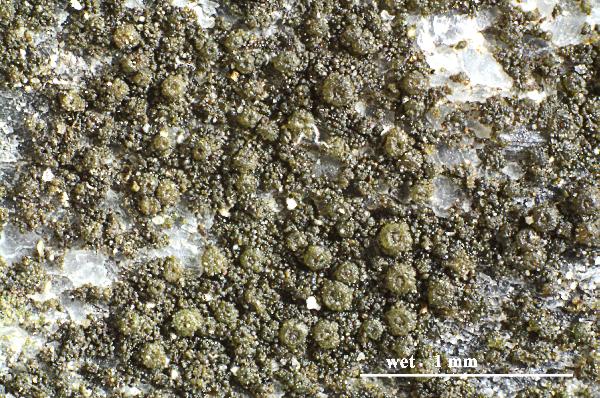

Felix Schumm - CC BY-SA 4.0
[ABL51579], Taiwan, Taichung County, park of Natural History Museum,
on limestone, 100 m, 24°09’22’’ N, 120°40’03’’ E. Leg. A. Aptroot
(no 51579), 6.10.2001, det. A. Aptroot, 2002, conf. M. Schulz, 2005
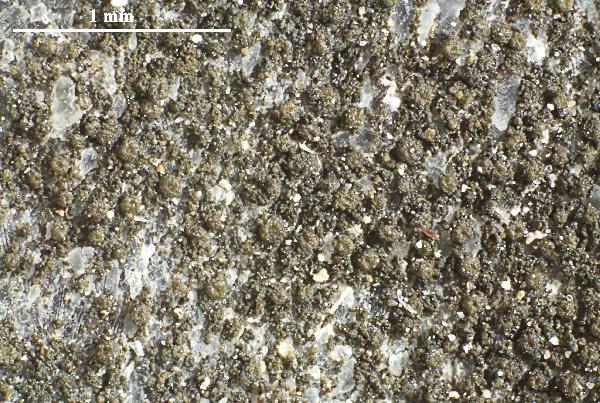

Felix Schumm - CC BY-SA 4.0
[ABL51579], Taiwan, Taichung County, park of Natural History Museum,
on limestone, 100 m, 24°09’22’’ N, 120°40’03’’ E. Leg. A. Aptroot
(no 51579), 6.10.2001, det. A. Aptroot, 2002, conf. M. Schulz, 2005
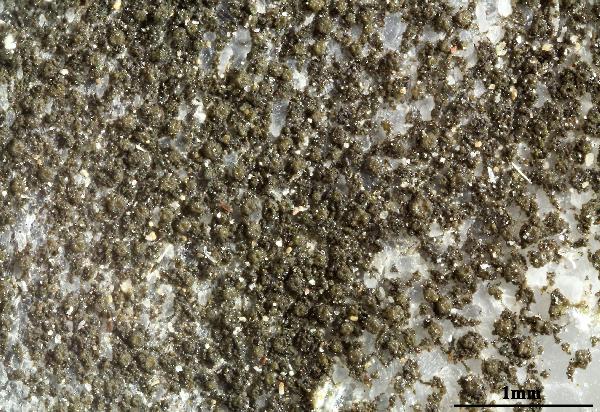

Felix Schumm - CC BY-SA 4.0
[ABL51579], Taiwan, Taichung County, park of Natural History Museum,
on limestone, 100 m, 24°09’22’’ N, 120°40’03’’ E. Leg. A. Aptroot
(no 51579), 6.10.2001, det. A. Aptroot, 2002, conf. M. Schulz, 2005
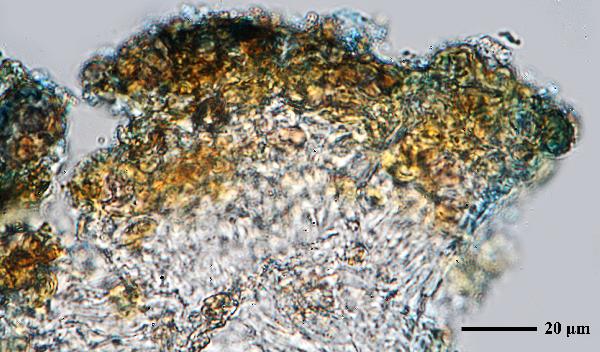

Felix Schumm - CC BY-SA 4.0
[ABL51579], Taiwan, Taichung County, park of Natural History Museum,
on limestone, 100 m, 24°09’22’’ N, 120°40’03’’ E. Leg. A. Aptroot
(no 51579), 6.10.2001, det. A. Aptroot, 2002, conf. M. Schulz, 2005
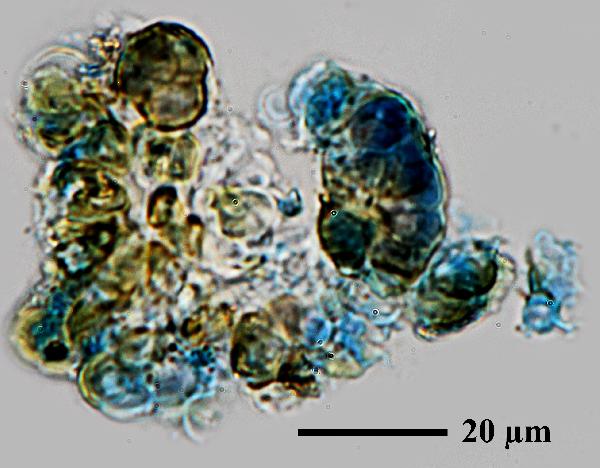

Felix Schumm - CC BY-SA 4.0
[ABL51579], Taiwan, Taichung County, park of Natural History Museum,
on limestone, 100 m, 24°09’22’’ N, 120°40’03’’ E. Leg. A. Aptroot
(no 51579), 6.10.2001, det. A. Aptroot, 2002, conf. M. Schulz, 2005
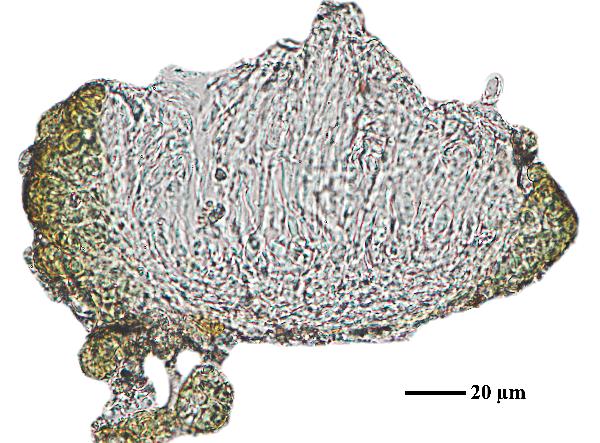

Felix Schumm - CC BY-SA 4.0
[ABL51579], Taiwan, Taichung County, park of Natural History Museum,
on limestone, 100 m, 24°09’22’’ N, 120°40’03’’ E. Leg. A. Aptroot
(no 51579), 6.10.2001, det. A. Aptroot, 2002, conf. M. Schulz, 2005
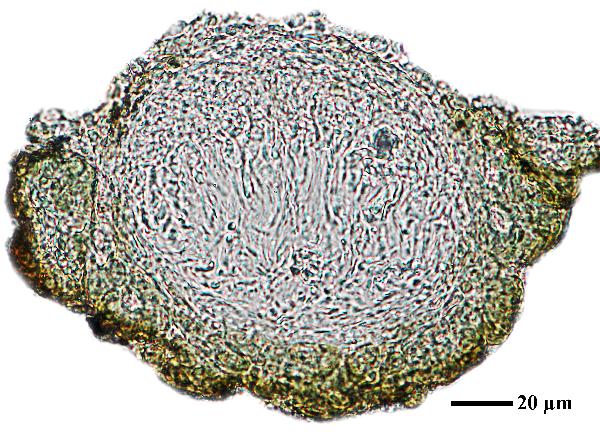

Felix Schumm - CC BY-SA 4.0
[ABL51579], Taiwan, Taichung County, park of Natural History Museum,
on limestone, 100 m, 24°09’22’’ N, 120°40’03’’ E. Leg. A. Aptroot
(no 51579), 6.10.2001, det. A. Aptroot, 2002, conf. M. Schulz, 2005
Growth form: Crustose
Substrata: rocks
Photobiont: cyanobacteria, coccaceous (e.g. Gloeocapsa)
Reproductive strategy: mainly sexual
On otherwise dry surfaces with short periods of water seepage after rain
Commonnes-rarity: (info)
Alpine belt: absent
Subalpine belt: absent
Oromediterranean belt: absent
Montane belt: very rare
Submediterranean belt: rare
Padanian area: absent
Humid submediterranean belt: rare
Humid mediterranean belt: rather rare
Dry mediterranean belt: extremely rare

Predictive model
| Herbarium samples |


P.L. Nimis; Owner: Department of Life Sciences, University of Trieste
Herbarium: TSB (16802)
2001/12/11
thallus with apothecia


Felix Schumm - CC BY-SA 4.0
[ABL51579], Taiwan, Taichung County, park of Natural History Museum, on limestone, 100 m, 24°09’22’’ N, 120°40’03’’ E. Leg. A. Aptroot (no 51579), 6.10.2001, det. A. Aptroot, 2002, conf. M. Schulz, 2005


Felix Schumm - CC BY-SA 4.0
[ABL51579], Taiwan, Taichung County, park of Natural History Museum, on limestone, 100 m, 24°09’22’’ N, 120°40’03’’ E. Leg. A. Aptroot (no 51579), 6.10.2001, det. A. Aptroot, 2002, conf. M. Schulz, 2005


Felix Schumm - CC BY-SA 4.0
[ABL51579], Taiwan, Taichung County, park of Natural History Museum, on limestone, 100 m, 24°09’22’’ N, 120°40’03’’ E. Leg. A. Aptroot (no 51579), 6.10.2001, det. A. Aptroot, 2002, conf. M. Schulz, 2005


Felix Schumm - CC BY-SA 4.0
[ABL51579], Taiwan, Taichung County, park of Natural History Museum, on limestone, 100 m, 24°09’22’’ N, 120°40’03’’ E. Leg. A. Aptroot (no 51579), 6.10.2001, det. A. Aptroot, 2002, conf. M. Schulz, 2005


Felix Schumm - CC BY-SA 4.0
[ABL51579], Taiwan, Taichung County, park of Natural History Museum, on limestone, 100 m, 24°09’22’’ N, 120°40’03’’ E. Leg. A. Aptroot (no 51579), 6.10.2001, det. A. Aptroot, 2002, conf. M. Schulz, 2005


Felix Schumm - CC BY-SA 4.0
[ABL51579], Taiwan, Taichung County, park of Natural History Museum, on limestone, 100 m, 24°09’22’’ N, 120°40’03’’ E. Leg. A. Aptroot (no 51579), 6.10.2001, det. A. Aptroot, 2002, conf. M. Schulz, 2005


 DOLICHENS
DOLICHENS
